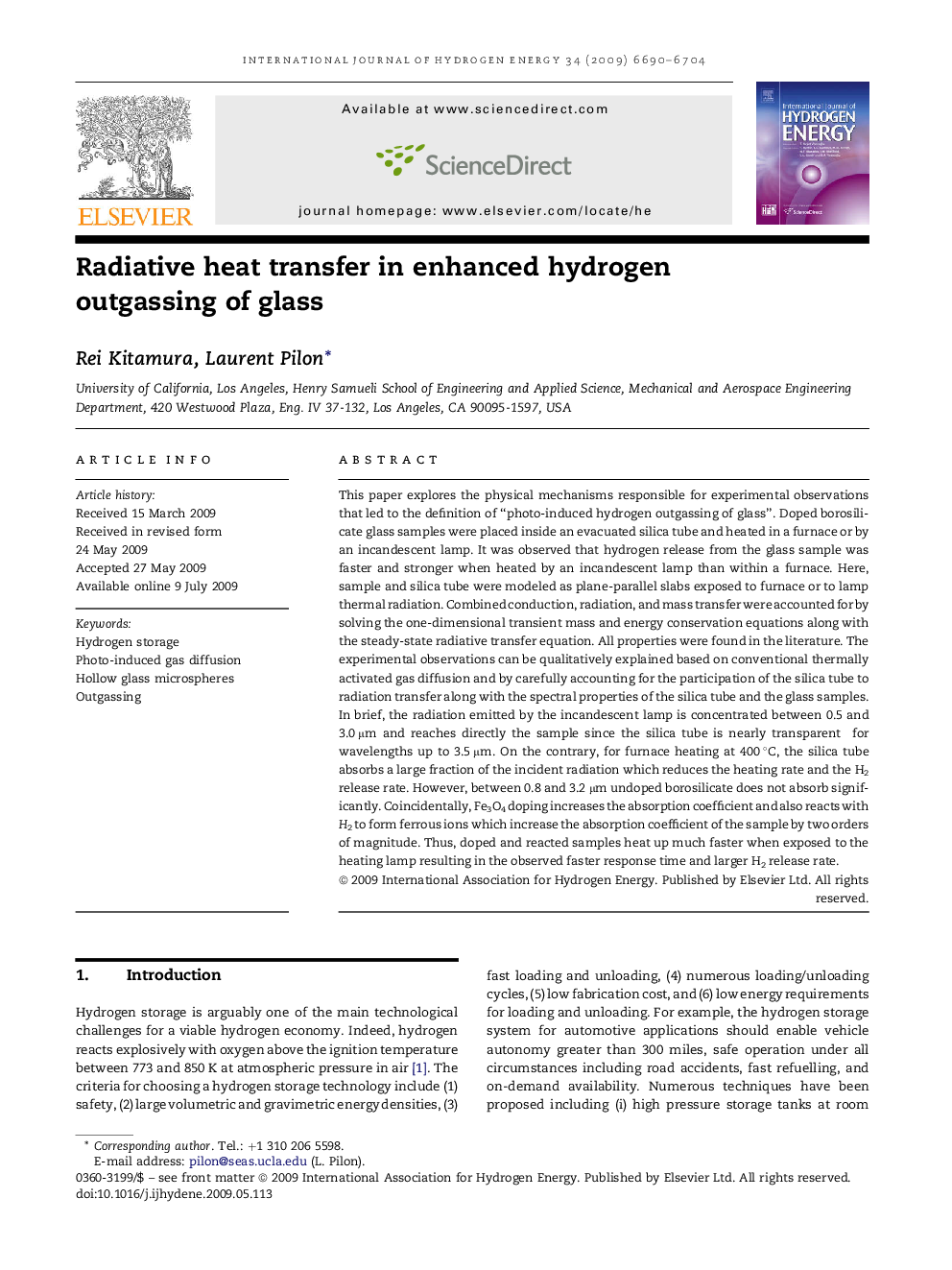| کد مقاله | کد نشریه | سال انتشار | مقاله انگلیسی | نسخه تمام متن |
|---|---|---|---|---|
| 1277625 | 1497625 | 2009 | 15 صفحه PDF | دانلود رایگان |

This paper explores the physical mechanisms responsible for experimental observations that led to the definition of “photo-induced hydrogen outgassing of glass”. Doped borosilicate glass samples were placed inside an evacuated silica tube and heated in a furnace or by an incandescent lamp. It was observed that hydrogen release from the glass sample was faster and stronger when heated by an incandescent lamp than within a furnace. Here, sample and silica tube were modeled as plane-parallel slabs exposed to furnace or to lamp thermal radiation. Combined conduction, radiation, and mass transfer were accounted for by solving the one-dimensional transient mass and energy conservation equations along with the steady-state radiative transfer equation. All properties were found in the literature. The experimental observations can be qualitatively explained based on conventional thermally activated gas diffusion and by carefully accounting for the participation of the silica tube to radiation transfer along with the spectral properties of the silica tube and the glass samples. In brief, the radiation emitted by the incandescent lamp is concentrated between 0.5 and 3.0 μm and reaches directly the sample since the silica tube is nearly transparent for wavelengths up to 3.5 μm. On the contrary, for furnace heating at 400 °C, the silica tube absorbs a large fraction of the incident radiation which reduces the heating rate and the H2 release rate. However, between 0.8 and 3.2 μm undoped borosilicate does not absorb significantly. Coincidentally, Fe3O4 doping increases the absorption coefficient and also reacts with H2 to form ferrous ions which increase the absorption coefficient of the sample by two orders of magnitude. Thus, doped and reacted samples heat up much faster when exposed to the heating lamp resulting in the observed faster response time and larger H2 release rate.
Journal: International Journal of Hydrogen Energy - Volume 34, Issue 16, August 2009, Pages 6690–6704